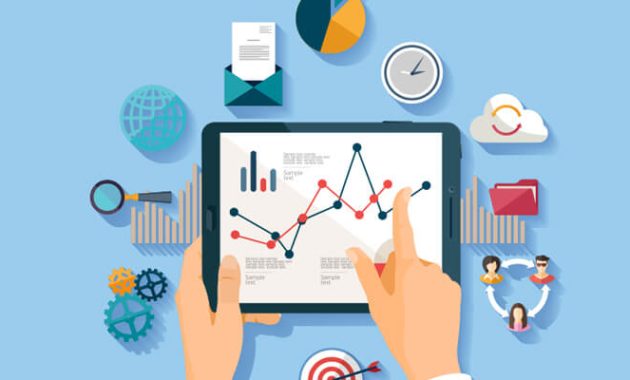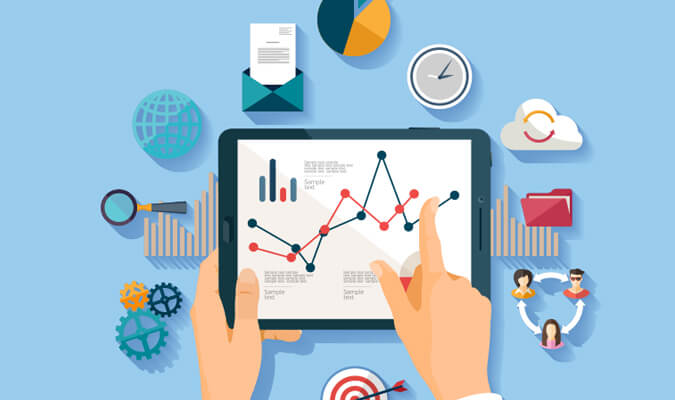
Self-Service Business Intelligence Software: A Modern Approach to Data Analysis
In today’s fast-paced business environment, data is king. Companies are drowning in information, but often struggle to extract meaningful insights. Traditional business intelligence (BI) solutions often require specialized technical skills, creating bottlenecks and hindering agile decision-making. This is where self-service business intelligence software steps in, empowering modern teams to analyze data independently and drive better business outcomes.
This article delves into the world of self-service business intelligence software, exploring its benefits, key features, and how it’s transforming the way businesses operate. We’ll examine how this software empowers teams, from marketing to finance, to make data-driven decisions without relying on IT departments or data scientists for every analysis. The rise of self-service business intelligence software reflects a broader trend toward democratization of data, making insights accessible to everyone.
The Evolution of Business Intelligence
Traditional BI systems were complex and often expensive. They typically involved lengthy implementation cycles and required specialized expertise for data integration, report creation, and analysis. This created a significant barrier to entry for many organizations, particularly small and medium-sized businesses (SMBs).
The advent of cloud computing and more user-friendly interfaces has revolutionized the BI landscape. Self-service business intelligence software is now accessible and affordable for businesses of all sizes. It allows users to connect to various data sources, create dashboards, and generate reports with minimal technical training. This shift has empowered business users to become data analysts, enabling faster decision-making and improved business agility.
Key Benefits of Self-Service BI Software
Self-service business intelligence software offers numerous advantages over traditional BI systems. Some of the most significant benefits include:
- Faster Time to Insights: Users can access and analyze data quickly, without waiting for IT or data science support.
- Improved Data Literacy: The intuitive interfaces and data visualization tools help users understand and interpret data more effectively.
- Increased Agility: Businesses can respond to market changes and opportunities more rapidly, based on real-time data insights.
- Reduced Costs: Self-service business intelligence software can be more affordable than traditional BI systems, reducing reliance on external consultants or specialized staff.
- Empowered Teams: Employees across different departments can make data-driven decisions, fostering a culture of data-driven decision-making.
Essential Features of Self-Service BI Software
To effectively empower modern teams, self-service business intelligence software must offer a robust set of features. These include:
- Data Connectivity: Ability to connect to a wide range of data sources, including databases, spreadsheets, cloud services, and social media platforms.
- Data Preparation and Cleansing: Tools to clean, transform, and prepare data for analysis. This includes data profiling, data quality checks, and data blending.
- Data Visualization: Intuitive tools for creating charts, graphs, and dashboards that effectively communicate data insights.
- Interactive Dashboards: The ability to create interactive dashboards that allow users to drill down into data and explore different perspectives.
- Collaboration Features: Tools for sharing reports, dashboards, and insights with colleagues, fostering collaboration and communication.
- Mobile Access: The ability to access data and dashboards on mobile devices, enabling users to stay informed on the go.
- Security and Governance: Robust security features to protect sensitive data and ensure compliance with data privacy regulations.
- Artificial Intelligence (AI) and Machine Learning (ML) Integration: Some platforms include AI-powered features like automated insights and predictive analytics to further enhance decision-making.
Choosing the Right Self-Service BI Software
Selecting the right self-service business intelligence software is crucial for success. Consider the following factors when evaluating different platforms:
- Ease of Use: The software should have an intuitive interface and be easy to learn and use, even for users with limited technical skills.
- Data Source Connectivity: Ensure the software can connect to all your relevant data sources.
- Features and Functionality: Evaluate the available features and ensure they meet your specific business needs.
- Scalability: The software should be able to scale to accommodate your growing data volumes and user base.
- Pricing: Consider the pricing model and ensure it aligns with your budget.
- Support and Training: Look for vendors that offer comprehensive support and training resources.
- Integration Capabilities: Check for seamless integration with your existing business applications.
Real-World Applications of Self-Service BI
Self-service business intelligence software is used across various industries and departments. Here are some examples:
- Marketing: Track campaign performance, analyze customer behavior, and optimize marketing spend.
- Sales: Monitor sales performance, identify sales trends, and forecast future sales.
- Finance: Analyze financial performance, track expenses, and identify cost-saving opportunities.
- Human Resources: Analyze employee data, track performance, and improve employee retention.
- Operations: Optimize supply chain management, track inventory levels, and improve operational efficiency.
These are just a few examples of how self-service business intelligence software can be used to improve decision-making across the organization. Its flexibility and adaptability are key strengths.
The Future of Self-Service BI
The future of self-service business intelligence software is bright. As data volumes continue to grow, the demand for self-service BI solutions will only increase. We can expect to see several key trends:
- Increased AI and ML Integration: AI and ML will play an increasingly important role in automating insights, predicting future trends, and enhancing data analysis.
- More User-Friendly Interfaces: Software will become even more intuitive and accessible, making it easier for users to extract value from data.
- Greater Focus on Data Governance: As data privacy regulations become more stringent, data governance features will become even more critical.
- Enhanced Collaboration Features: Collaboration tools will become more sophisticated, enabling teams to work together more effectively on data analysis.
- Mobile-First Design: Mobile access will become even more seamless and integrated, allowing users to stay informed on the go.
Self-service business intelligence software is no longer a luxury; it’s a necessity for modern businesses that want to thrive in the data-driven world. By empowering teams with the tools and insights they need, organizations can make better decisions, improve efficiency, and gain a competitive advantage. The ability to quickly access and analyze data is essential.
Implementing Self-Service BI: Best Practices
Successfully implementing self-service business intelligence software requires careful planning and execution. Here are some best practices:
- Define Clear Goals: Before implementing the software, clearly define your business goals and objectives.
- Identify Key Metrics: Determine the key performance indicators (KPIs) that you want to track.
- Choose the Right Software: Select the software that best meets your specific needs.
- Provide Training: Offer comprehensive training to users on how to use the software.
- Establish Data Governance: Implement data governance policies to ensure data quality and security.
- Encourage Collaboration: Foster a culture of collaboration and communication around data.
- Monitor and Evaluate: Continuously monitor the use of the software and evaluate its effectiveness.
Following these best practices will help you maximize the benefits of self-service business intelligence software and ensure a successful implementation.
Conclusion: Embracing Data-Driven Decision Making
Self-service business intelligence software is revolutionizing the way businesses operate. By empowering modern teams to analyze data independently, this software enables faster decision-making, improved efficiency, and a competitive advantage. As the business landscape continues to evolve, the adoption of self-service business intelligence software will become increasingly critical for organizations of all sizes. The ability to quickly analyze data is a significant asset.
Embrace the power of data and unlock the potential of your business with self-service business intelligence software. It’s an investment in your future. By giving teams the tools to access, analyze, and interpret data, businesses can foster a culture of data-driven decision-making. This leads to better outcomes.
[See also: Choosing the Right BI Software for Your Business]
[See also: Data Visualization Best Practices for Effective Reporting]
[See also: Data Governance: Why it Matters in the Age of Self-Service BI]

